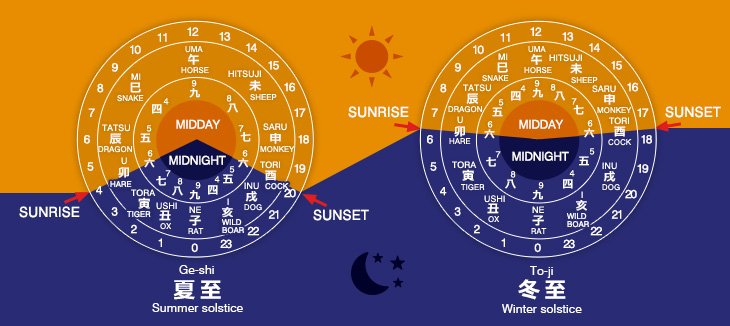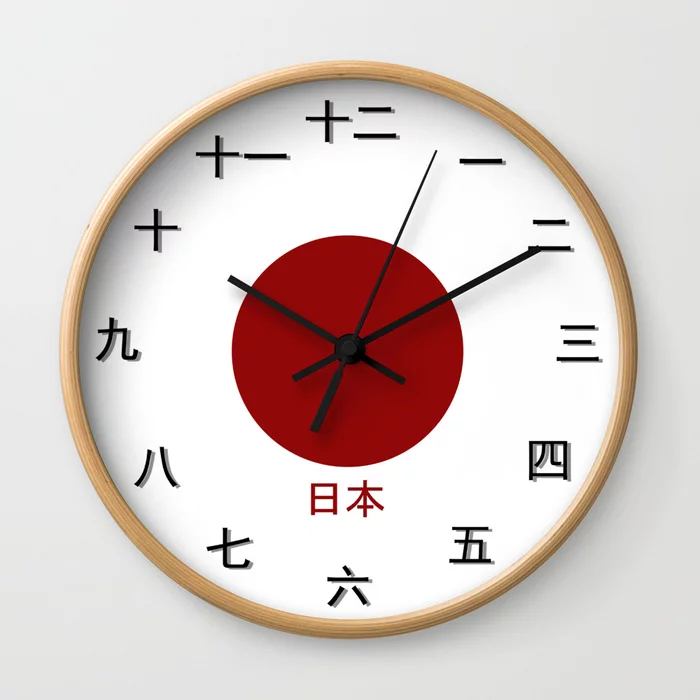Japanese clocks are renowned for their intricate mechanisms, which reflect both the country’s rich heritage and its commitment to precision in craftsmanship. From the early days of traditional wadokei to the technological innovations brought forth by brands like Seiko, Japanese clocks have a distinct character in both design and function. Delving into the inner workings of these clocks reveals the careful balance between art and science that defines Japanese horology.
1. The Mechanical Genius of Wadokei: Traditional Japanese Timekeeping
One of the earliest examples of Japanese clockmaking is the wadokei, a clock that dates back to the Edo period. What makes the wadokei unique is its adaptation to Japan’s traditional timekeeping system, which divided the day into six equal “hours” for day and night, with the length of each hour varying according to the season. This meant that the gears within the wadokei had to be designed to adjust the timekeeping automatically throughout the year.
The core mechanism of the wadokei features a system of rotating discs that represent the changing hours, with mechanical adjustments made based on the season. These clocks were often powered by weights or springs, and their designs required incredible precision. The intricacy of this mechanism ensured that time was measured accurately according to the day’s length, making the wadokei a testament to Japanese ingenuity in mechanical design.
2. Seiko and the Quartz Revolution: Precision at Its Finest
In the 20th century, Japan again transformed clockmaking with the development of the quartz clock by Seiko. The quartz mechanism relies on the piezoelectric properties of quartz crystals, which vibrate at a precise frequency when an electric current is applied. These vibrations are then converted into a constant pulse that regulates the clock’s timekeeping mechanism.
What makes quartz clocks so significant is their unmatched accuracy. Seiko’s breakthrough with the Astron in 1969 revolutionized the world of horology, as quartz clocks and watches quickly became the standard for reliable timekeeping. The quartz mechanism remains a core technology in many modern clocks, providing consumers with precision that mechanical clocks cannot achieve.

3. Pendulums, Springs, and Gears: Mechanical Mastery in Japanese Clocks
While the quartz revolution brought about significant changes, traditional mechanical clocks still hold an important place in Japan’s horological landscape. Many Japanese clocks, especially antique and luxury models, still operate using traditional pendulum, spring, and gear mechanisms.
Pendulum clocks are particularly valued for their aesthetic beauty and mechanical intricacy. The swinging pendulum regulates the clock’s timekeeping by controlling the movement of the gears. Each swing causes the gear teeth to move forward by a set amount, ensuring the accurate passage of time. These clocks often require precise adjustments to maintain accuracy and are a favorite among collectors of classic Japanese timepieces.
Another popular mechanical system in Japanese clocks is the mainspring mechanism, which stores energy when wound and releases it gradually to power the gears. In higher-end Japanese clocks, these mechanisms are designed to minimize friction and wear, resulting in longer-lasting, reliable timepieces.
4. Modern Innovation: Hybrid Mechanisms and Smart Clocks
In the spirit of blending tradition and innovation, many modern Japanese clocks incorporate hybrid mechanisms that combine mechanical elements with digital features. For example, Seiko’s Spring Drive technology uses a traditional mainspring to power the clock but incorporates a quartz regulator for precision. This hybrid system merges the beauty of mechanical movements with the accuracy of quartz.
Additionally, Japan has embraced the development of smart clocks that offer advanced features such as automatic time zone adjustments, internet connectivity, and even voice command functionality. These clocks, while highly technical, often maintain minimalist designs that pay homage to traditional Japanese aesthetics.
5. The Artistry of Japanese Clock Mechanics
Japanese clock mechanisms are not just functional; they are works of art. Many traditional Japanese clocks are hand-assembled, with intricate detailing on gears, springs, and other internal components. Even the placement of the smallest screws and parts is done with precision and care, reflecting the value of craftsmanship in Japanese culture.
In addition to the mechanical beauty, many Japanese clocks are adorned with artistic flourishes that showcase the country’s reverence for nature and simplicity. Makie (lacquer work), kintsugi (repairing with gold), and other traditional techniques are often applied to the exterior of clocks, making them not just timepieces but also cultural treasures.
Conclusion
Japanese clock mechanisms represent a perfect fusion of craftsmanship, tradition, and innovation. From the mechanical wonders of the wadokei to the groundbreaking quartz technology developed by Seiko, Japan’s approach to timekeeping is both meticulous and artistic. Each clock, whether powered by weights, springs, or quartz crystals, tells a story of precision and cultural heritage.
For enthusiasts of horology, Japanese clocks offer a fascinating glimpse into a world where the intricacies of clock mechanisms go beyond functionality—they become symbols of time, history, and the enduring spirit of innovation.





Derzeit können Sie sich bei vielen Online-Casinos Freispiele
oder Gratis-Guthaben sichern. 1️⃣ Wählen Sie ein Bonusangebot ohne Einzahlung aus, das Sie erhalten möchten. In einigen Fällen ist ein exklusiver Promo-Code erforderlich, um den Bonus ohne Einzahlung
zu erhalten. Nach der Anmeldung wird das Gratis-Spielguthaben oder die Freispiele automatisch Ihrem Konto gutgeschrieben. Um den beworbenen Bonus
ohne Einzahlung zu erhalten, müssen Sie lediglich ein Konto bei einem Casino Ihrer Wahl erstellen. Auf
dieser Seite finden Sie eine Vielzahl von Casinos mit Bonus ohne Einzahlung, die Ihnen gratis Guthaben oder Freispiele anbieten.
Casino.guru sieht sich als eine unabhängige Informationsplattform
über Online Casinos und Online Casinospiele,
die von keinem Glücksspielanbieter oder irgendeiner anderen Instanz kontrolliert wird.
Wenn Sie einen Bonus ohne Einzahlung von einem Casino annehmen, sollten Sie sich über alle Regeln, Bestimmungen und Einschränkungen im Klaren sein, die
für diesen Bonus gelten, wenn Sie mit diesem spielen wollen. Sobald Sie alle Spielrunden absolviert haben, werden die
angesammelten Gewinne Ihrem Konto in Form von Bonusgeldern gutgeschrieben, und in weiterer Folge funktioniert alles genauso wie
bei einem kostenlosen Bargeldbonus. So können beispielsweise bestimmte
Arten von Spielen oder einzelne Spieltitel von bestimmten Spielanbietern von dem Spielen mit Bonusgeldern ausgenommen sein. Sie können dann alle
vorgesehenen und von Ihnen gewünschten Spiele spielen, obwohl es auch hier einige Ausnahmen geben kann.
References:
https://online-spielhallen.de/marvel-casino-ihr-leitfaden-zu-bonus-codes-und-mehr/
Für diejenigen, die Wert auf Anonymität und Sicherheit legen, bietet das Casino auch Transaktionen in verschiedenen Kryptowährungen an. Zet Casino bietet
eine breite Palette an Zahlungsmethoden, um den unterschiedlichen Bedürfnissen und Vorlieben der Spieler gerecht
zu werden. Diese Benutzerfreundlichkeit beim Registrierungsprozess macht es neuen Spielern leicht, Zugang zu den vielfältigen Spielen und
Angeboten des Casinos zu erhalten.
Gerade als Sie Ihren Kontostand neu laden möchten, um
ZetCasino-Spiele zu spielen, erinnern Sie Einzahlungsbeschränkungen daran, innerhalb Ihres Budgets zu spielen. Zu den Tischspielen gehören American Roulette, French Roulette, 21 Burn Blackjack, Mini Blackjack, Baccarat Zero Commission usw.
Auf der ZetCasino-Website finden Sie eine lange Liste mit Spielautomaten und Tischspielen, um Ihren Wunsch nach
finanzieller Freiheit zu wecken. Es erwartet
Sie eine Reihe von Spielautomaten, Videopoker, Live-Casino- und Live-Tischspielen, um Ihre Risiko-/Ertragslust zu steigern. Wer
möchte, kann auch eine ZetCasino App verwenden, um noch schneller
zu spielen.
Diese Freispiele sind oft an ausgewählte Spielautomaten gebunden und unterliegen ebenfalls
Umsatzbedingungen. Ein weiterer Anreiz sind Freispiele, beispielsweise 30 Free Spins, die teilweise bei der Anmeldung oder als Teil
des VIP-Programms gewährt werden. Die Höhe dieses
Willkommensbonus variiert von Zeit zu Zeit, kann jedoch durchaus attraktiv sein und
gibt Spielern die Möglichkeit, das Angebot zu testen.
References:
https://online-spielhallen.de/ihr-einfacher-zugang-rizk-casino-login-im-detail/
What are some alternative words for ‘key’ and ‘important’?
In this section, we will explore both absolute and near
synonyms for “important.” “Important” conveys a sense of value or significance, while “essential” indicates something
that is absolutely necessary. Why are synonyms important?
Common stronger choices are essential, critical, crucial, and vital.
First think about why the thing matters.
Important means something matters for a reason, like influence or impact.
Use urgent when time is the main reason it matters. Important means something matters, but urgent means
it needs attention right now. These fit leaders, respected
people, or key jobs. Below is a list of common synonyms for important with short meanings.
In writing, a synonym can make your meaning sharper, like showing urgency,
greatness, or deep value.
Important means something has value or priority.
Some things are urgent but not truly important, like a loud message that can wait.
Many things are important but not urgent. Significant often sounds more formal and is used in school or research writing.
It means something has a real effect or meaning, often in a measurable
way. Important is general and can fit many situations.
References:
https://blackcoin.co/biggest-casino-sites-where-people-are-playing-in-november/
Jackpot Jill Casino’s bonuses have clear terms but always read the fine print.
Always choose casinos licensed by trusted authorities to stay on the right side of the law.
It’s secure, user-friendly, and perfect for players who want hassle-free banking.
The number of games, variants, and software providers varies from one casino to the next.
Trusted providers are essential for a high-quality online live casino experience.
Spread your gaming sessions throughout the week to maximise the value of the 10%
cashback offer, which puts money back into your pocket.
References:
https://blackcoin.co/casino-gambling-the-kinds-of-casino-bonuses/
All responsible gambling tools remain accessible through the
mobile interface. Battery optimisation ensures
extended gaming sessions without excessive device drain. The
app provides 20 free spins for enabling notifications after the first deposit.
The platform automatically adjusts graphics quality based on connection strength.
Stay Casino makes sure you can enjoy all your favorite games on the go.
Just a heads up – there’s no dedicated jackpot category here,
so you’ll need to search for these games manually. These games come with progressive pools that grow with every spin. The action happens in real time, with pro
dealers running the show and a handy chat feature that makes things feel
social.
References:
https://blackcoin.co/cashman-slots-10k-free-coins-a-comprehensive-guide/
The team responds quickly, providing advice on registration, bonuses, payouts, and
technical issues. Mega Medusa Casino offers professional, 24/7 customer support ready to assist Australian players at any time.
After verifying your account, you can make a deposit and activate your welcome bonus.
Generous welcome bonuses provide a significant boost to new members.
For an authentic experience, the live dealer lobby streams games
in real-time.Video poker enthusiasts will find a solid assortment of popular game types.
Our support team is available via email or live chat, ensuring a fun, hassle-free, secure gaming experience.
From action-packed video slots and timeless table games to huge progressive jackpots and
one-of-a-kind specialty titles, our collection is built for endless entertainment and serious
win potential. While card games and slots are engaging ways
to spend an afternoon at Mega Medusa, players who want to keep their gaming fresh may want to get in on the great selection of video poker and specialty games.
You’re all set to receive the latest promos, expert betting tips, and top pokies news — straight to
your inbox.🎰 As a welcome treat, check out our best free spins bonuses and start spinning the pokies
for free today! Mega Medusa Casino is a real online casino, and players do
receive payouts, especially when using crypto.
Registration is a breeze thanks to Inclave, a single sign-on system
used by a few other crypto casinos. The purple-and-gold Greek theme is easy on the eyes, but more importantly, the simple design makes it quick to find bonus offers,
free spins, and VIP rewards without digging through menus.
Kinbet supports a range of payment options, including Neosurf,
PayID, credit cards, Bitcoin, and Skrill. Kinbet operates under an Anjouan licence, which is common for offshore casinos serving Australia and New Zealand.
References:
https://blackcoin.co/welcome-to-your-new-casino-adventure-online/
online casino that accepts paypal
References:
https://backtowork.gr/employer/uk-deposit-method/
casino con paypal
References:
okbolt.co.kr
usa casino online paypal
References:
https://manpowerassociation.in/employer/top-de-casinos-online-con-paypal-lista-2025-%ef%b8%8f/
online casino that accepts paypal
References:
http://www.129koreaems.com/bbs/board.php?bo_table=free&wr_id=26501
paypal casinos online that accept
References:
https://somalibidders.com/employer/online-casino-australia-top-real-money-casino-list/
online casino paypal
References:
https://optimaplacement.com/companies/discover-top-new-casinos-in-2025-rated-reviewed/